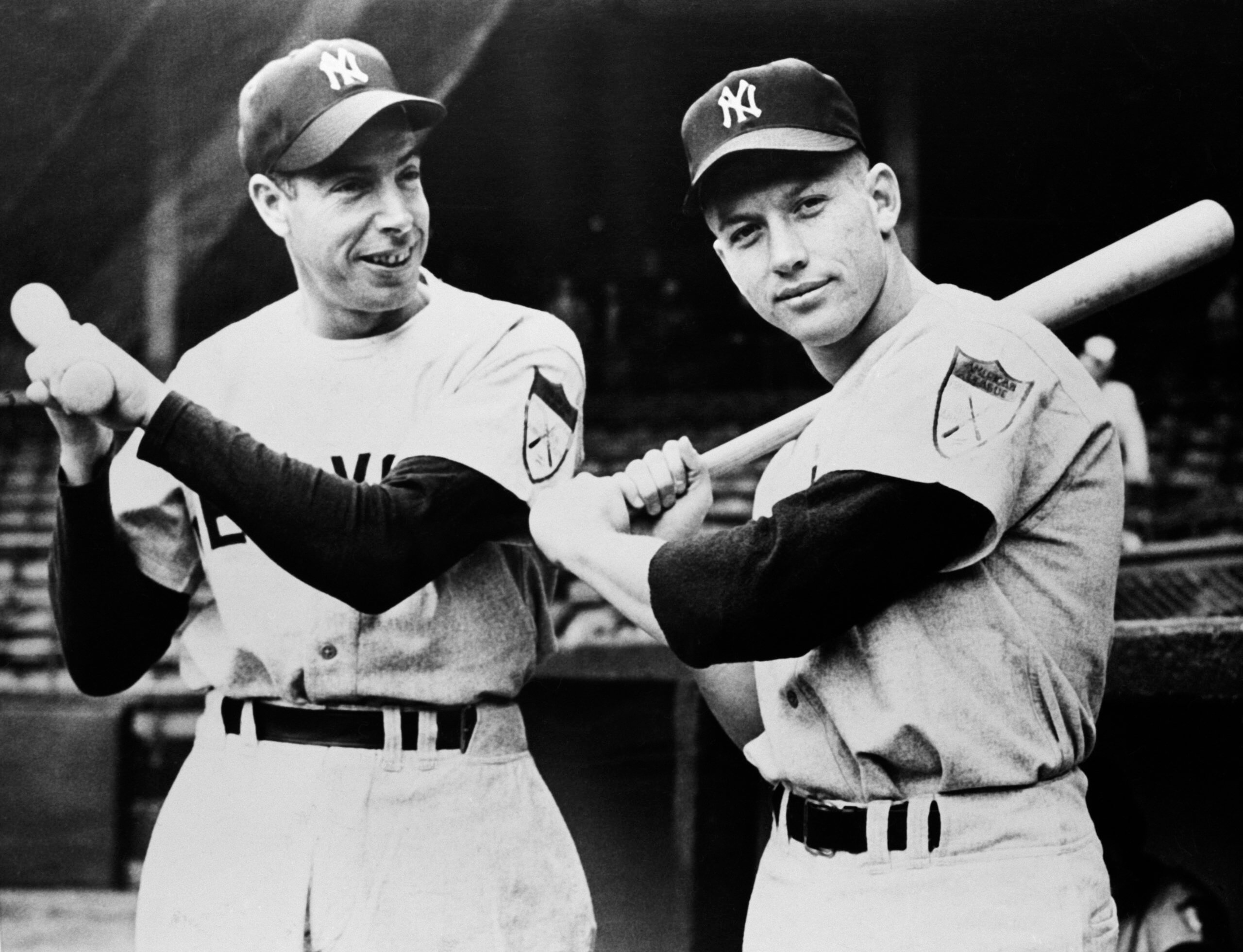Blog > Stories
Paths Collide: DiMaggio and Mantle

Blog > Stories
Paths Collide: DiMaggio and Mantle

The start of the classic hero’s journey is marked by a symbolic shift, the departure of the mentor and the arrival of the hero to take their place. Whether the mentor dies, like Obi Wan Kenobi in Star Wars, or simply passes on their knowledge to the hero and rides into the sunset, it’s a crucial component of so many of our most beloved tales.
But it isn’t just in the realm of literature or film that the hero’s journey applies: We see it play out in reality all the time. In the rap world, it’s the young star who rises up to snatch the throne from their predecessor. In Hollywood, we see leading men like Marlon Brando lose their No. 1 status to the next generation of talent like Robert De Niro.
The important thing that makes this classic story a universal truth is the willingness of the mentor to make room for the hero.
For Joe DiMaggio and Mickey Mantle, that wasn’t the case. Instead, their crossover sparked a classical struggle of nearly biblical proportions. Two foils pitted against one another by cosmic forces, each among the most dominant players of their era yet diametrically opposed in demeanor and style. And, crucially, they were forced to keep interacting for decades, an unnatural lack of separation after the changing of the guard.

Joe DiMaggio stands ready on his home turf, a patch of grass in center field at Yankee Stadium in the Bronx. Behind his poised face his mind races — not from the pressure of playing in the 1951 World Series (been there, done that, won eight), but because he knows the end of the road is drawing near.
Just a few paces to his left is a 19-year-old rookie named Mickey Mantle playing in his first World Series, the first to ever be televised. With the hopes of the Yankees dynasty placed firmly upon his broad shoulders, the muscle-bound kid’s goofy smile and good looks were perfectly timed to usher in the television age.
Before the game, Mantle was given strict instructions to take any ball he could reach, as DiMaggio’s heel had become a concern for Yankees manager Casey Stengel.
The Giants’ Willie Mays loft a fly-ball to right-center field.
With Stengel’s directions in mind, Mantle sprints full-speed to record the out.
DiMaggio’s declining athleticism had no effect on his pride, and there was no chance he would let some kid infringe on his territory.
“I got it!” DiMaggio calls out, sailing under the ball with the controlled instinct of a veteran. Mantle, stopping short, catches his cleat on a drainpipe, tearing up his right knee and collapsing to the ground.

The injury was a lasting one for Mantle. Even as he seamlessly replaced DiMaggio in center field and eventually joined the ranks of Yankee greats with a legendary career, he endured ceaseless battles with his own body, struggling to remain healthy. It became the most consequential knee injury in baseball history, not because of what was, but because of what could have been.
For DiMaggio, Mantle’s simultaneous failure to live up to his perceived potential (an absurdly high bar considering his Hall of Fame career) and his overshadowing of DiMaggio would never be forgiven. The sole season of overlap between the two legends would prove to be a preview of years to come — giving birth to a tense relationship bordering on rivalry as the Yankees torch was passed from one to the next.










